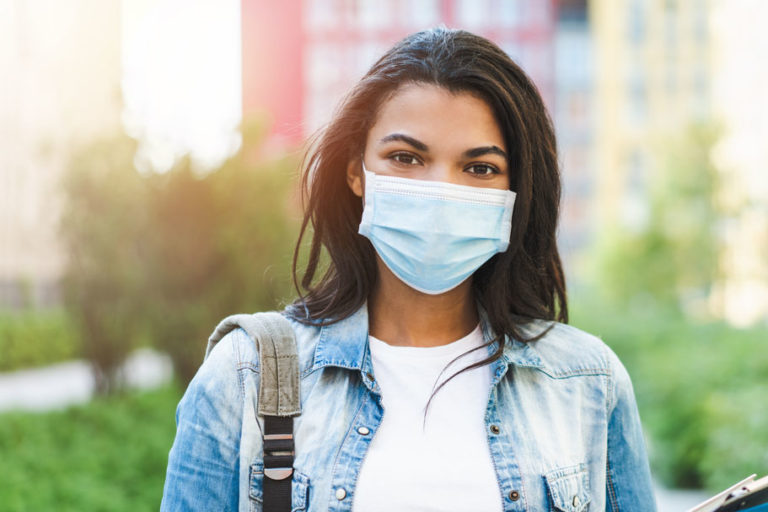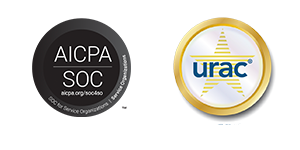Table of Contents
The threat of the Omicron variant is a gut punch to schools hoping to relax safety measures in 2022. Now, colleges and universities are considering requiring booster shots, extending mask mandates, limiting social gatherings, and reverting to online classes. What do higher education leaders need to know about this new variant?
At the beginning of 2022, the Centers for Disease Control and Prevention (CDC) estimated Omicron makes up 95% of cases. According to real-time data from the Health and Human Services Department reported in January 2022, approximately 80% of ICU beds were in use with nearly 30% of those occupied with COVID-19 patients.
Where did Omicron come from?
The sample of the first announced Omicron case was detected in South Africa on November 22, 2021. The CDC said it has since been identified by the country’s health authorities in samples as early as November 8.
The earliest case reported to the Global Initiative on Sharing All Influenza Data (GISAID), a global database tracking the evolution of COVID-19 from laboratories in the U.S., dates back to a sample from Maryland on November 21. The CDC said the earliest U.S. case discovered so far had symptoms on November 15 “in a person with a history of international travel.”
Omicron evolved separately from the Delta variant, descending from another strain that appeared in mid-2020. According to European health officials, “it is the most divergent variant that has been detected in significant numbers during the pandemic so far, which raises serious concerns that it may be associated with a significant reduction in vaccine effectiveness and increased risk for reinfections.”
On November 26, 2021, the COVID-19 variant was named Omicron by the World Health Organization (WHO). Though the initial vaccine regimen might still be enough to fend off severe disease, early data suggests a booster shot is needed to restore maximum protection against infection from Omicron. People who survived a prior case of COVID-19 appear to be at risk of reinfection from Omicron.
How well do vaccines work against Omicron?
As of December 17, 2021, more than 490 million vaccine doses were administered—58% Pfizer, 38% Moderna, 3.5% Johnson & Johnson. According to the President’s Chief Medical Adviser Dr. Anthony Fauci, these vaccines do not need to be changed to target the Omicron variant.
Two doses of the Pfizer or Moderna vaccines appear to offer “considerable protection” against severe disease from the Omicron variant, Fauci said at a briefing on December 15, citing data from South Africa. And, a growing body of studies testing people’s antibodies against the variant found a sufficient boost of protection in those who received a third Pfizer or Moderna shot. “The message remains clear: if you are unvaccinated, get vaccinated, and particularly in the arena of Omicron, if you are fully vaccinated, get your booster shot,” said Fauci.
Spokespeople for Merck and Pfizer both say they believe their antiviral pills, which have been hailed as potential game-changers in the fight against COVID-19, will likely remain effective against Omicron. Additionally, Pfizer’s drug Paxlovid was granted FDA authorization on December 22. Paxlovid treatment begins within a few days of first developing symptoms. The course of treatment is made up of three tablets that are taken twice a day over five days. Pfizer said Paxlovid was shown in clinical trials to cut the chances of hospitalization or death by 88% among adults compared to a placebo.
Since data shows that the COVID-19 vaccine can help protect against the Omicron variant, college and university leaders continue to adjust how their campuses battle the virus. More than 1,000 colleges now require students to be vaccinated against COVID-19, with many updating language to include the need for booster shots or offering online options for classes for the safety and well-being of students. As both students and higher education professionals navigate the world of an ongoing global pandemic, institutions need to examine all avenues to keep staff, faculty, and students healthy.
What can school leaders do to support college students?
While much is still unknown about Omicron, it stands to reason that college students and their parents—as well as faculty and staff—are likely to have questions about what steps their school is taking to ensure everyone’s health and well-being. Higher education leaders can follow these recommendations to make sure all institutional stakeholders are supported during this time.
Communicate clearly and often
Continue to implement CDC guidelines
The CDC’s recommended protections for schools haven’t changed, but are more urgent: universal masking and vaccination of children and adults, systemic testing and tracing infections, keeping at least six feet of distance indoors, practicing good hygiene among students, sanitation, and ventilation of buildings.
Urge students to get vaccinated—and then get a booster
While hundreds of colleges already require COVID-19 vaccines, an increasing number of higher education leaders say boosters are an obvious next step. More than 1,000 colleges have issued booster shot requirements as of September 2022. Data from the CDC shows that authorized COVID-19 vaccines can help protect from COVID-19, so it’s important to encourage boosters to keep your students safe and healthy.
Prepare your campus with a 24/7 healthcare solution
Stay up-to-date with guidelines for physical and mental health
Both the CDC and the American College Health Association (ACHA) published COVID-19 guidelines for how colleges and universities can operate safely this academic year. Additionally, valuable information is available regarding student mental health during the pandemic at the National Alliance on Mental Illness. Higher education institutions must take a comprehensive public health approach when it comes to student well-being on campus.
Promote student mental health and well-being
Many students and their families feel uneasy about variants of concern. While some are enthusiastic about finishing this year in person, others are anxious after hearing about the Omicron variant. Higher education administrators need to address those anxieties as a part of their comprehensive plan to support the mental health and well-being of their students. This is why The Jed Foundation (JED), a leading nonprofit organization in protecting emotional health and preventing suicide among young adults, created a set of guidelines for addressing student mental health and well-being for higher education institutions reopening campuses.
Supporting student health and well-being during Omicron
Facing coronavirus variants, higher education must be diligent in planning how it supports the health and well-being needs of students. But, focusing only on treatment and care will leave holes in the education, awareness, and preventative measures that campuses need to maintain overall student well-being. And focusing only on preparing faculty and staff to help students will lead to burnout. A comprehensive, top-down approach puts a strategy in place to ensure that every student has the resources they need to succeed.
Incorporating telehealth into your strategy can help. If your campus is looking at ways to fill gaps in care and provide a more comprehensive approach to student health and well-being during COVID-19 and beyond, a strategic telehealth partner such as TimelyCare can work alongside on-campus healthcare resources to provide 24/7 support for both mental and physical health. Contact TimelyCare to learn how a customized telehealth solution can help your students thrive—even as new coronavirus variants escalate.






